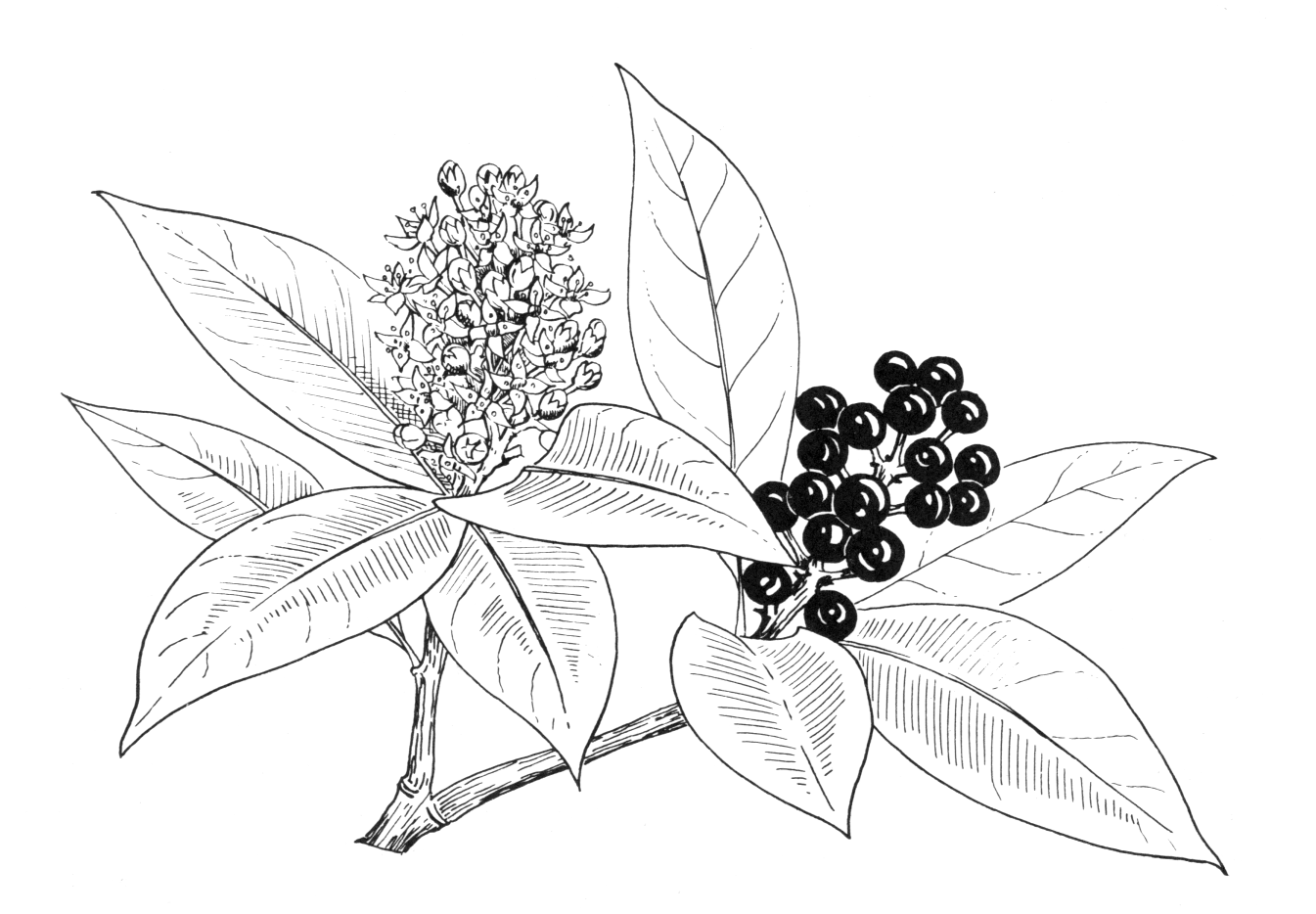Skimmia reevesiana
Credits
Article from Bean's Trees and Shrubs Hardy in the British Isles
Recommended citation
'Skimmia reevesiana' from the website Trees and Shrubs Online (treesandshrubsonline.
Genus
Synonyms
- Ilex reevesiana Fort., Gard. Chron . 1851, p. 5
- S. fortunei Mast.
- S. japonica sens . Lindl., not Thunb.
Infraspecifics
Other taxa in genus
A low evergreen shrub, usually not more than 2 ft high, with dark green, narrow elliptical leaves, averaging 21⁄2 to 4 in. long, and from 3⁄4 to 1 in. wide, tapering gradually and equally towards both ends. Flowers white, always bisexual in cultivated plants, 1⁄2 in. across, produced in terminal panicles 2 to 3 in. long. Fruits rich crimson, distinctly oval or pear-shaped, 1⁄3 in. long, persisting. Seeds pointed at both ends. Bot. Mag., t. 4719.
The plant from which this species was described was introduced by Fortune from a Shanghai nursery, where this skimmia was the rarest and most prized of the owner’s possessions. The original had been brought from the Hwang Shan, a mountain some 250 miles to the south-west of Shanghai, and was called the ‘Wang-shan-kwei’, Kuei Hua being the Chinese name for Osmanthus fragrans. Fortune saw it in 1848 and it reached Standish and Noble’s nursery in the following year; it was first exhibited in October 1852, but Lindley had seen a specimen in the previous year, which he identified as S. japonica. This is the name under which the species was grown until Dr Masters cleared up the confusion in 1889.
S. reevesiana dislikes a limy soil and needs one that is fairly rich and moist to be seen at its best. Being hermaphrodite and self-fertile, every plant is capable of bearing fruit without cross-pollination, but artificial fertilisation helps to secure a good set. The flowers are abundant and charmingly fragrant.
As represented in cultivation, S. reevesiana differs from S. japonica in its constantly hermaphrodite flowers with their parts in fives and in the obovoid or ellipsoid fruits; also in the narrower, darker green, more acuminate leaves. But the type-plant of S. reevesiana derived by seed or cuttings from the one individual of the Hwang Shan, which may have been a hermaphrodite or even apomictic variant of a species that is normally dioecious, as are the other skimmias. Of the Formosan plants referred to S. reevesiana by Li some are dioecious and some bear tetramerous flowers as in S. japonica (H.-L. Li, Woody Flora of Taiwan (1963), pp. 381–3). Some cultivated plants of S. reevesiana agree perfectly with the type. But others differ from it somewhat and may derive from a later, unrecorded introduction or be seedlings of the original clone.

